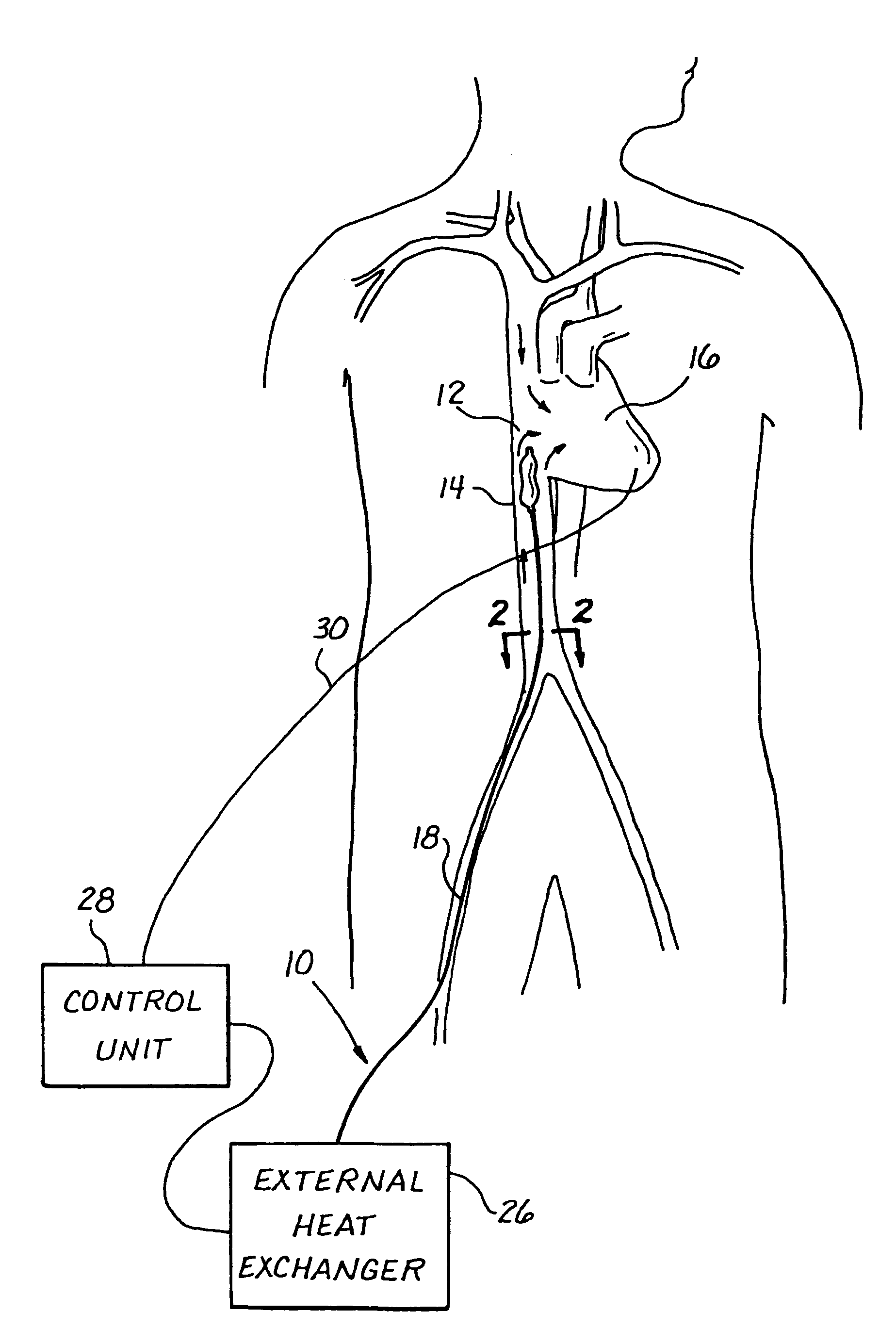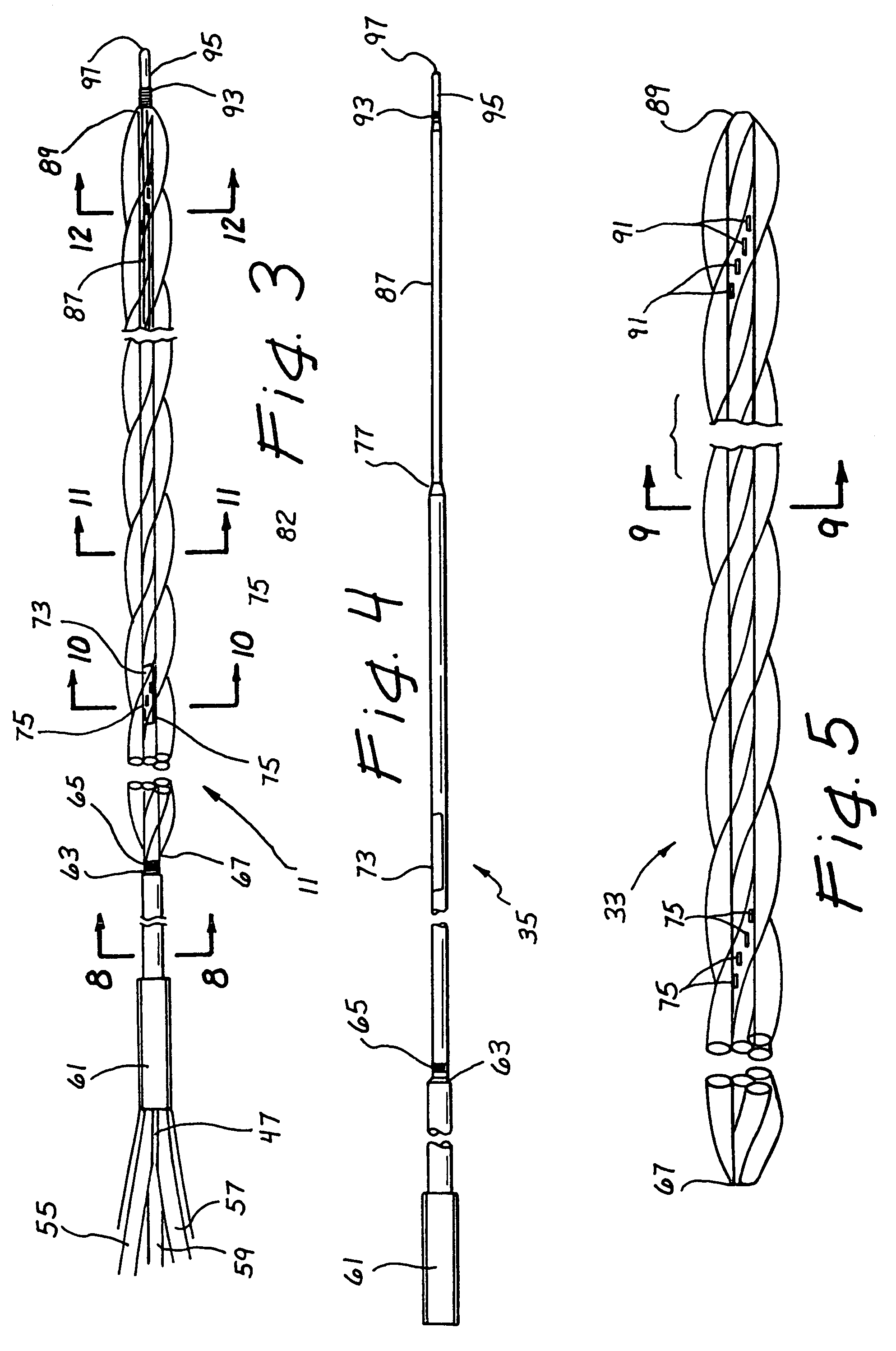Use of intravascular hypothermia during angioplasty procedures
a technology of angioplasty and intravascular hypothermia, which is applied in the field of cardiac therapy, can solve the problems of serious and permanent damage to the heart muscle, permanent injury to cardiac muscle cells, and about 66% of mi patients not making a complete recovery, so as to prevent, deter, minimize or treat other types of damage to the myocardium, and prevent or lessen myocardial infarction.
- Summary
- Abstract
- Description
- Claims
- Application Information
AI Technical Summary
Benefits of technology
Problems solved by technology
Method used
Image
Examples
example
[0077]The method of the invention may be described by reference to the following example. In the instance described here, the cardiac cooling method of the invention was performed using 60 B 80 kg. pigs. The study was conducted in accordance with The Guide for Care and Use of Laboratory Animals. Each pig was anesthetized with isoflourane anesthesia, and vascular sheaths were inserted percutaneoulsy in to the femoral artery and vein respectively. A median sternotomy was done, followed by the isolation of the left anterior descending coronary artery. A three lobed heat exchange catheter as described above was inserted into the sheath in the femoral vein and the catheter was advanced until the heat exchange region was in the IVC just below the heart. Saline was circulated through the heat exchange region of the catheter and an exterior heat exchanger. The exterior heat exchanger was in the form of a hot / cold plates formed by a number of Peltier units, and a bag of saline in contact wit...
PUM
 Login to View More
Login to View More Abstract
Description
Claims
Application Information
 Login to View More
Login to View More - R&D
- Intellectual Property
- Life Sciences
- Materials
- Tech Scout
- Unparalleled Data Quality
- Higher Quality Content
- 60% Fewer Hallucinations
Browse by: Latest US Patents, China's latest patents, Technical Efficacy Thesaurus, Application Domain, Technology Topic, Popular Technical Reports.
© 2025 PatSnap. All rights reserved.Legal|Privacy policy|Modern Slavery Act Transparency Statement|Sitemap|About US| Contact US: help@patsnap.com



